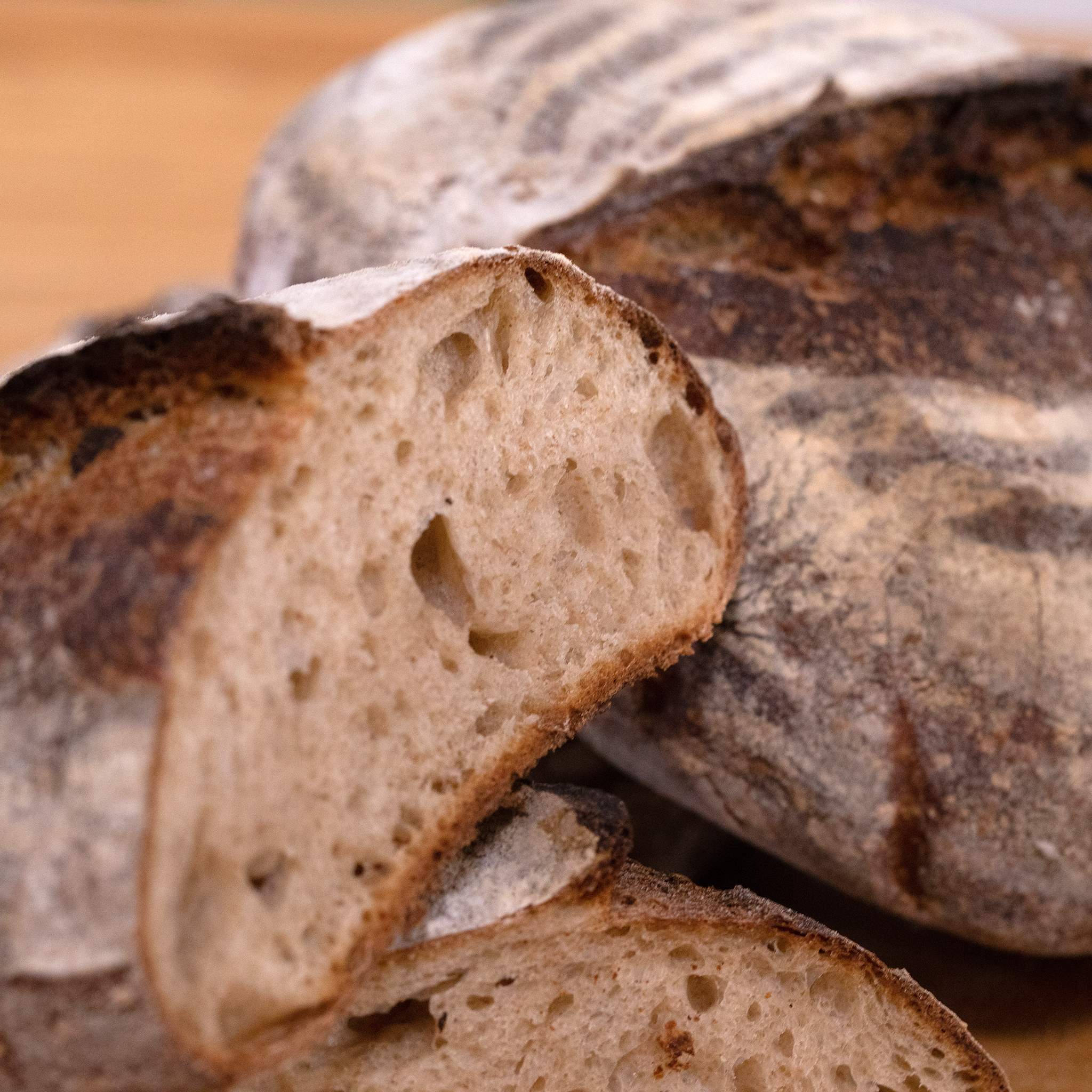Enjoy the final weeks of summer + shop our seasonal collection before we say so long. Find it here.
Set the tone with a fresh coat of paint. Shop Magnolia Home Paint.
This just in: a new season of Magnolia Table with Joanna Gaines. Learn more.

Sourdough Bread
Total 20 hours (includes resting times)
Active 60 mins
Makes 2 loaves, 8 to 10 servings
TIP: When doing this kind of baking, weighing with grams is much more precise. You can use cups, but the result is not as guaranteed.
My ambient room temperature for making the starter and levain is usually around 72°F to 75°F.
I like to use the 3-quart Combo Cooker by Lodge for baking my sourdough bread, but any lidded Dutch oven will do.
Special Equipment
a proofing basket or a bowl; a 3-quart cast-iron Dutch oven
Special Equipment
a proofing basket or a bowl; a 3-quart cast-iron Dutch oven
Ingredients
Sourdough Starter
Levain
Directions
- Add about 90 percent of your total warm water (648 grams) into a large bowl.
- Dissolve the 210 grams (about 2 cups) of the Levain into the water. It may not dissolve completely, which is fine. Whisk the bread, all-purpose, and whole wheat flours together in a medium bowl.
- Add the flours to the levain mixture and begin to mix. Your goal is to incorporate the water into the flour. Once it starts to come together and feels dry, let it rest for 30 minutes in a large oiled bowl or a food storage container with a lid.
- Add the salt and the remaining warm water (72 grams) to the levain mixture and mix together by gently squeezing it in with your hands.
- Once incorporated, transfer to another large oiled bowl, cover, and let rest for 30 minutes.
- After this initial resting period, perform a gentle "stretch and fold" every 30 minutes, for a total of 2 times. For each stretch and fold, stretch the dough up out of the bowl and fold it over itself, like an envelope; rotate the bowl 4 times, repeating and making sure that every side has been folded over itself.
- Transfer to another oiled large bowl and allow to ferment (on your kitchen counter, or if it is chilly, in the oven with the light on) for an additional 3 1/2 hours.
- Once you're ready to shape the dough, flour your work surface and divide the dough into 2 pieces. (I usually only do loaves that are 750 to 800 grams). Shape the dough into the shape of your vessel, round to round, or freeform if you are going directly onto a pizza stone or sheet pan. Shape the dough by pulling each side taut and folding it over itself like an envelope, creating a seam on the bottom of the shape. Unlike the “shape and fold” method, for shaping the final loaf, you want to have flour on your hands and the work surface, so that the dough doesn't stick to them.
- Allow the dough to proof in baskets or bowls for about 30 minutes, then cover with a plastic bag and put into your fridge for 8 to 12 hours.
- Preheat the oven to 500°F. Preheat a 3-quart cast-iron Dutch oven (see Cook's Note) in the oven for 1 hour.
- Turn your loaves into the hot pan and lower the oven temperature to 465°F. Cover with the lid and bake for 20 minutes. Remove the lid and let the steam out. Bake (uncovered) until the desired color is achieved, about 25 minutes more.
- Let cool or do what I do and serve warm with butter.
- Sourdough Starter and Levain:
- For the sourdough starter -- Day One: Use a fork to mix 100 grams (1/2 cup) of rye flour and 100 grams (1/2 cup) of warm water in a glass mason jar or any type of container that has a lid. Cover and leave at room temperature for 24 hours.
- Day Two: You will probably see some sort of activity depending on how warm your kitchen is. The smell may not be so pleasant. Reserve 100 grams (about 1/2 cup) of the mixture and discard the rest. Feed another 100 grams (1/2 cup) of rye flour and 100 grams (1/2 cup) of warm water to the original mixture and leave at room temperature for another 24 hours.
- Day Three: You may see the markings on the walls of the jar from a "rise and fall" of the new starter, along with nice bubbles and air pockets. This is good. The smell should be getting a bit more bearable. Repeat the process of Day Two.
- Day Four: There will definitely be a good volume increase and a consistent amount of bubbling and air pockets. There should be a somewhat sweet and sour smell that is pleasant. You're in the home stretch. Repeat Day Two one more time.
- Day Five: By this point, you should have a ripe and sweet-smelling sourdough starter. You should see some movement of the bubbles when you jostle the container and a structure when you stir it. You are now ready to build a levain.
- For the levain: Use a fork to mix the mature starter, bread flour, whole wheat flour, and warm water in a container, then let it rest at room temperature until the mixture is covered in bubbles and air pockets for 3 to 4 hours.